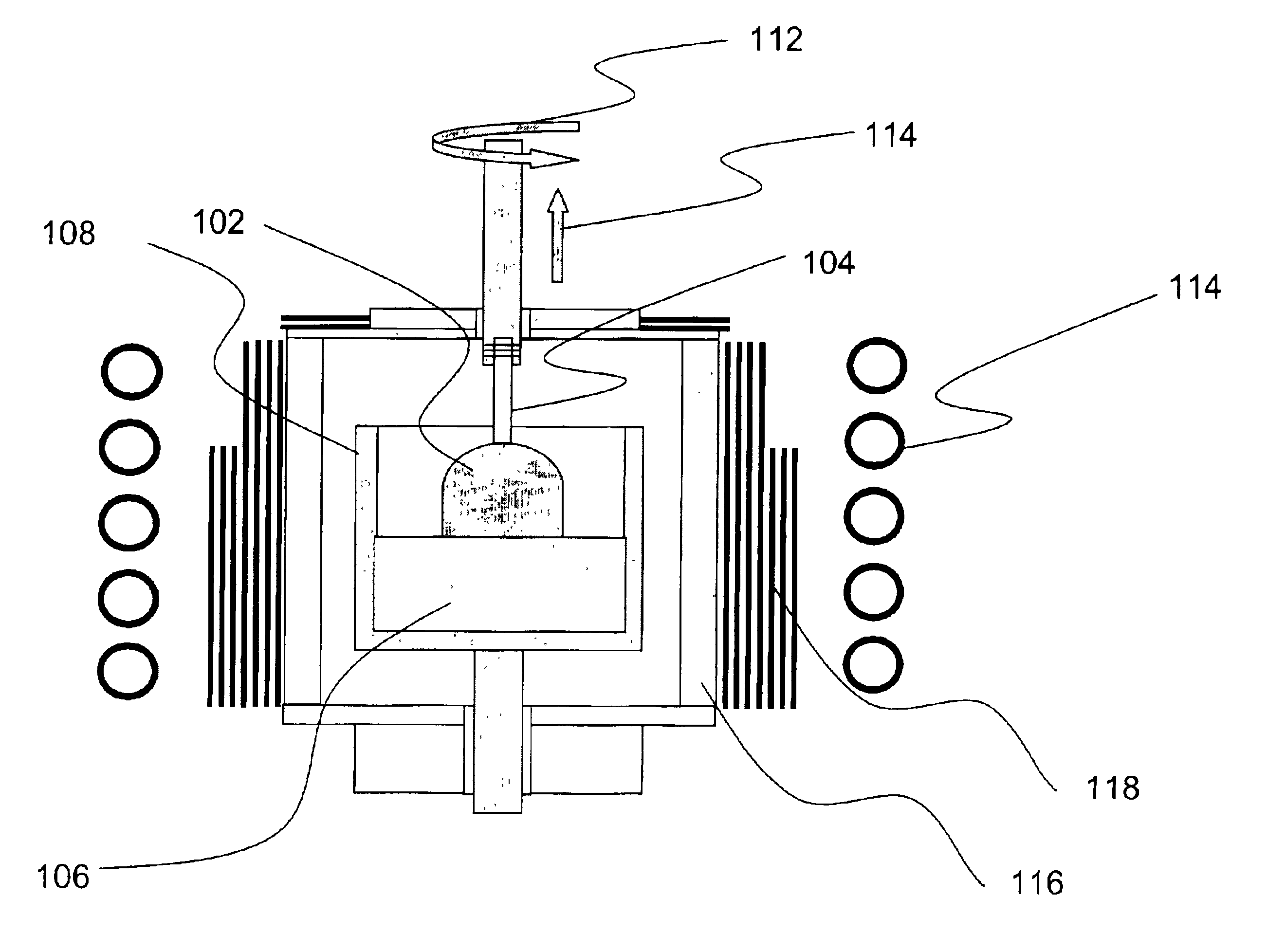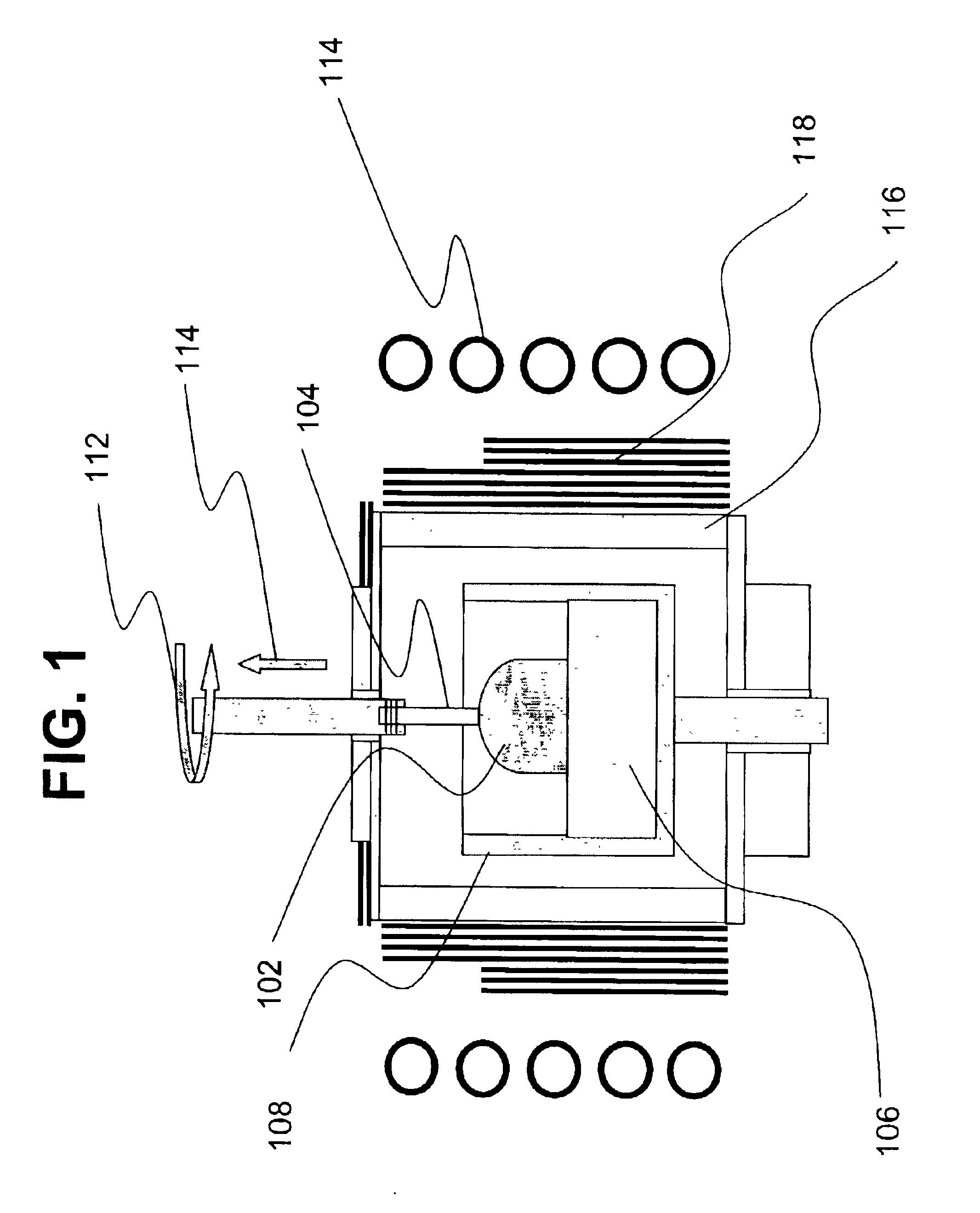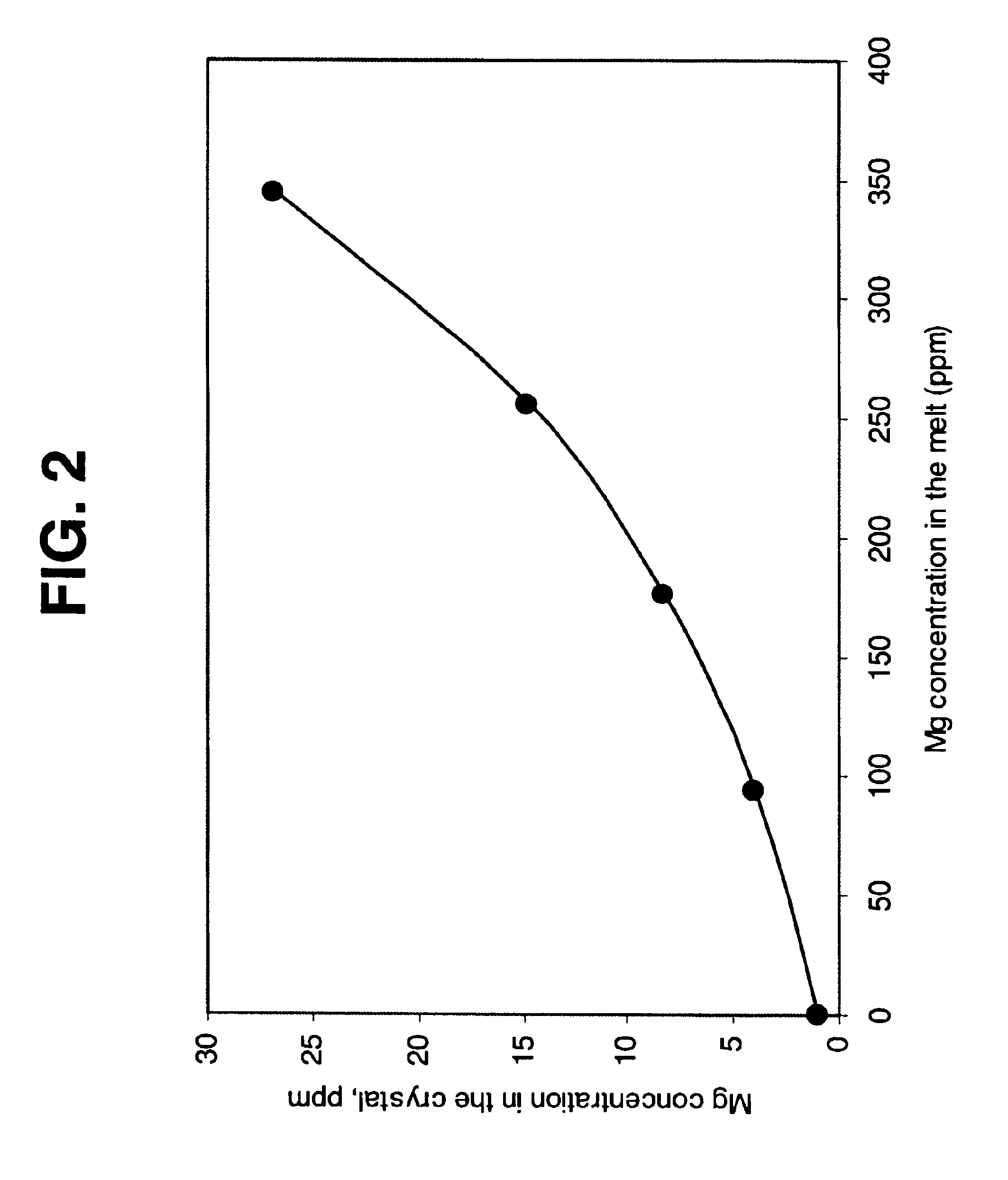Aluminum oxide material for optical data storage
a technology of aluminum oxide and optical data storage, applied in the field of doped aluminum oxide crystalline materials, can solve the problems of insufficient material properties, inability to write/read data, and unstable rewritable photopolymer, and achieve high data storage density, high temperature and time stability of stored data, and increase the write/read rate
- Summary
- Abstract
- Description
- Claims
- Application Information
AI Technical Summary
Benefits of technology
Problems solved by technology
Method used
Image
Examples
example i
A crystal of Al2O3:C,Mg made according to a preferred embodiment of the present invention was grown using a Czochralski crystal growth technique (illustrated by FIG. 1) in argon atmosphere with added doping gases of carbon monoxide in the amount 8800 ppm (0.88%). Magnesium impurity in the amount of 550 ppm (0.055%) was added as MgAl2O4 spinel crystal to the stock of Al2O3 crystals loaded into the crucible. The amount of the Mg impurity measured in the grown crystal using spectral analysis was equal to 27 ppm. A highly reducing atmosphere and low partial pressure of oxygen that stimulates the creation of oxygen vacancies in the Al2O3 crystal structure was obtained using a hot graphite succeptor coupled to the inductor of an induction-heating furnace. Crystal growth was performed at 2050° C. with a pulling rate of 5 mm / min and 10 revolutions of the seed per minute. The crystals in the shape of a boule having a 45 mm diameter were obtained. Crystals were then cut in to 1 mm thick disks...
example ii
Optical absorption spectra of the new crystalline material of the present invention tested as described above and of a known Al2O3:C crystal are illustrated in FIG. 4. The intensity of F+-bands at 230 and 255 nm is significantly higher in Mg-doped crystals. That indicates higher concentration of F+-centers charge compensated by the Mg2+-ions. A new blue absorption band at 435 nm indicates the creation of aggregate F22+(2 Mg) defects used in the current invention.
The evidence of the importance of Mg-impurity in production of F+(Mg) and F22+(2 Mg) centers is the dependence of corresponding absorption band intensity on the impurity concentration introduced into the crystal during crystal growth (FIG. 12 and FIG. 13). The dependence is characteristic of the concentration dependence of a luminescence output on impurity content in laser host crystals and TLD phosphors.
example iii
To justify the appropriate wavelength range of excitation and emission light, the emission-excitation spectra of aggregate centers in Al2O3 doped with Mg and C in two different states were obtained (FIG. 7 and FIG. 9). The spectra were obtained using a spectrofluorimeter equipped with pulsed Xe-lamp, two scanning Acton Research spectrographs and a cooled CCD from Princeton Instruments. It was shown that a fresh (or erased) crystal shows an intense green luminescence band in the region of 520 nm with the excitation band corresponding to the blue absorption band at 435 nm shown also earlier in FIG. 4. After a writing (bleaching) operation, the green emission band disappears almost completely and the crystal shows an intensive emission band in the region of 750 nm with excitation bands at 255 nm and 335 nm corresponding to F+(Mg)- and F2+(2 Mg) absorption bands respectively. Both emission bands: green band at 520 and IR band at 750 nm corresponding to F22+(2 Mg)- and F2+(2 Mg)-centers ...
PUM
| Property | Measurement | Unit |
|---|---|---|
| Temperature | aaaaa | aaaaa |
| Temperature | aaaaa | aaaaa |
| Fraction | aaaaa | aaaaa |
Abstract
Description
Claims
Application Information
 Login to View More
Login to View More - R&D
- Intellectual Property
- Life Sciences
- Materials
- Tech Scout
- Unparalleled Data Quality
- Higher Quality Content
- 60% Fewer Hallucinations
Browse by: Latest US Patents, China's latest patents, Technical Efficacy Thesaurus, Application Domain, Technology Topic, Popular Technical Reports.
© 2025 PatSnap. All rights reserved.Legal|Privacy policy|Modern Slavery Act Transparency Statement|Sitemap|About US| Contact US: help@patsnap.com



